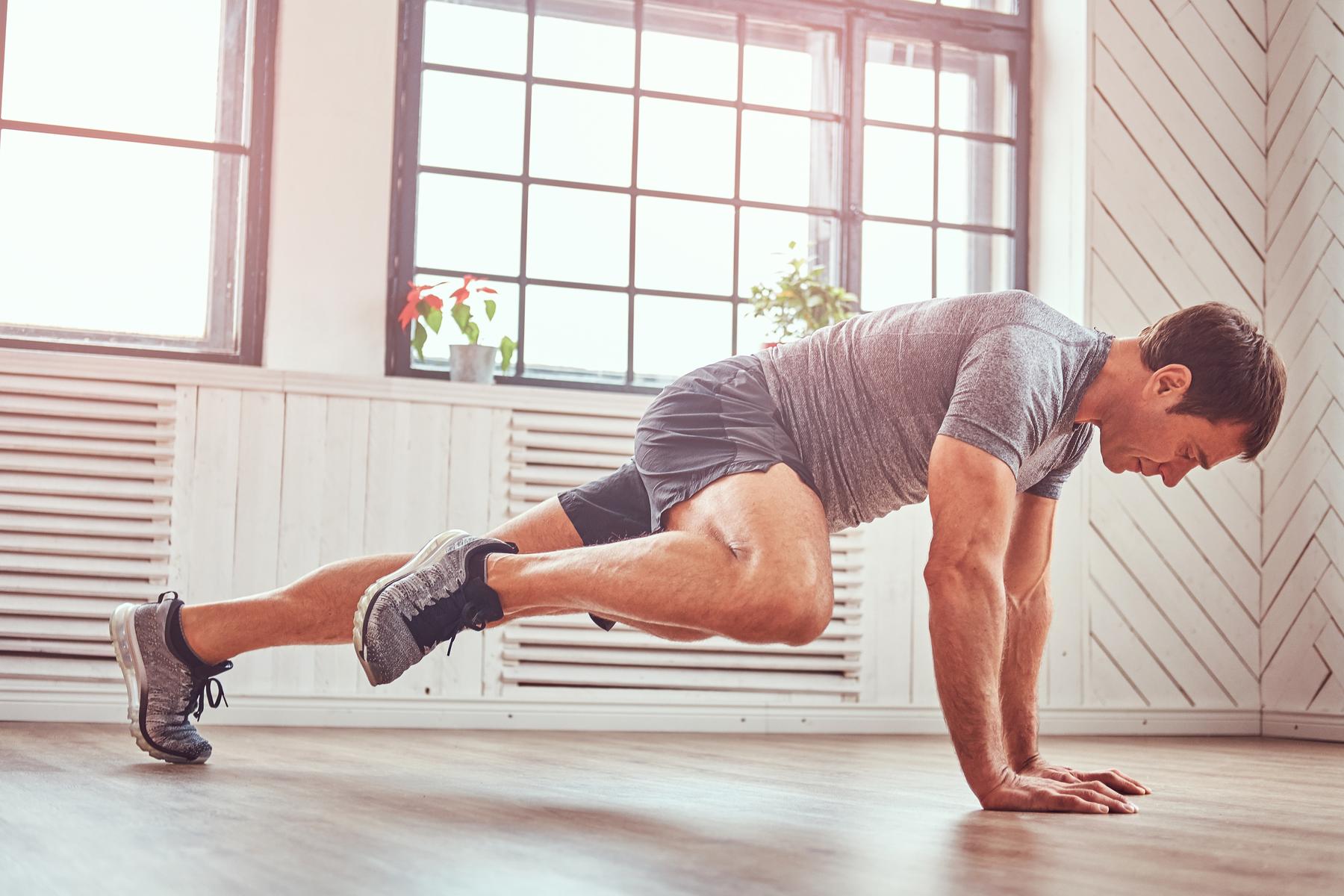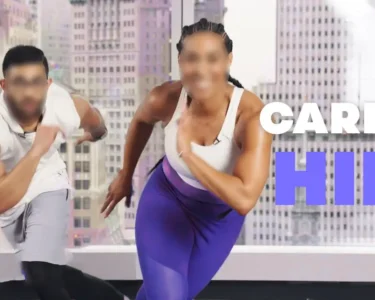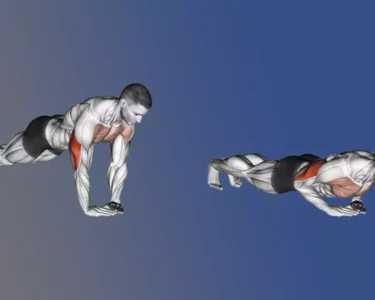Despite what Peloton stans might tell you, you don’t need fancy equipment to get an effective workout at home. A good routine can be made up of body weight exercises that tone muscles and get your heart pumping.
A beginner workout at home without equipment is a great jumping off point. It will help you familiarize yourself with the basic moves and build strength before moving on to more advanced exercises.
Effective Home Workouts Without Equipment
Bodyweight circuit training
Bodyweight circuit training is an effective way to build muscle and burn fat without having to spend money on expensive equipment. This type of workout uses your body weight as resistance to build strength and improve cardiovascular fitness. You can perform these workouts in your own home or on a fitness trail or course. They are also a great option if you don’t have access to a gym or want to work out in privacy.
Circuit training uses body-weight exercises that target different muscle groups with little or no rest between each exercise. These workouts are ideal for beginners or those who do not have the space to purchase and store equipment. They can also help you get into a routine and avoid boredom.
The best part about this workout is that it targets all the major muscle groups in your body. It includes exercises that hit your quads, hamstrings, core, and shoulders. The beginner workout at home without equipment is perfect for those days when you need to break a sweat but don’t have the time or energy to visit the gym.
HIIT High-Intensity Interval Training
HIIT stands for high-intensity interval training and it is an effective way to burn calories without a gym membership. It involves short periods of intense exercise that reach 80-100% of your maximum heart rate followed by a rest period or active recovery. It is easier to do than regular cardio exercises and it can be more fun for people who prefer a challenge. However, it’s important to know that HIIT can be hard on the joints and should not be done by those with chronic health conditions such as heart disease or rheumatoid arthritis.
One of the best things about HIIT is that you can do it at home, and it doesn’t require any equipment. You can use calisthenics and body weight exercises, such as lunges, jump squats, and plank jacks to get an amazing workout. These workouts are a great way to burn fat and build muscle. They also take less time than traditional cardio exercises and can be done at a pace that suits you. This is a great option for those who struggle to find the time to exercise regularly.
Yoga or Pilates routines
Yoga and Pilates are both low-impact workouts that help improve strength, balance and flexibility. Both exercises also have mental benefits, which can improve your mood and overall well-being.
Unlike most aerobics classes, both Pilates and yoga are suitable for people of all fitness levels. However, it is important to find a class that fits your needs and abilities. For example, faster-paced vinyasa yoga will elevate your heart rate more than slower classes.
Both exercises can be done on a mat using your body weight or small props, such as a ball or resistance bands. In Pilates, you can also use additional equipment like reformers, which are bed-like frames with a sliding carriage, springs and barrels to provide resistance during your workout.
Yoga and Pilates can both help tone the back muscles, improve posture and balance, and increase core strength. They can also strengthen other muscle groups and reduce the risk of injury. For example, both exercises can improve balance and help prevent falls, especially as you age. They can also help lower your blood pressure and reduce stress.
Tabata workouts
There are many workouts available to help you burn calories and build muscle. However, not everyone has the time for a long jog or even short bursts of vigorous exercise. For those who are short on time and still want to improve their fitness levels, the Tabata workout is ideal. This high-intensity interval training routine involves short work and rest periods. Each round consists of 20 seconds of intense activity followed by 10 seconds of rest. This cycle is repeated eight times, resulting in a four-minute workout that can burn more calories than traditional cardiovascular exercise.
The workouts are designed to push you to your limits. This type of high-intensity exercise can increase your aerobic capacity, also known as VO2 max, and boost your anaerobic threshold, which allows you to sustain intense exertion for longer periods of time. But, be careful not to overdo it. Hamlin advises beginners to start with a rated perceived exertion (RPE) of six and then gradually increase it over time.
You can use a variety of exercises to complete a Tabata workout, including cardio and strength moves like jumping jacks or burpees. You can also use a fitness machine, such as a treadmill, if you have access to one at home or the gym.
Calisthenics exercises
Calisthenics exercises are a great way to build muscle and burn calories without needing to invest in equipment. They are a form of resistance training that uses the body’s own weight for movement, and many movements such as push ups, lunges, and jumps target multiple muscles at once. They also help to improve posture, balance and coordination.
Calisthenic exercises can be done almost anywhere, including at home. They are easy to perform, and they require very little space. Moreover, they are one of the best workouts for beginners since they can be easily modified to fit their abilities and fitness level. For example, a beginner might start with knee-assisted push ups, while an advanced practitioner could try a one arm variation.
Another advantage of calisthenics is that it is a great choice for those who don’t want to pay for gym memberships or expensive equipment. Moreover, they are a good way to track your progress and set goals. For instance, a person who is trying to lose weight can use their push-up or pull-up reps as a measure of their progress.
Dance cardio routines
Dance cardio routines are a fun and exciting way to get your heart pumping while enjoying the thrill of movement. They can be done at home and don’t require any special equipment, making them a great choice for those who are looking to avoid gym-going or have a fear of trying new workouts.
While dancing may seem like a social activity, it’s actually a powerful cardiovascular exercise that can burn up to 250 calories in 30 minutes. The best dance cardio workouts are high-intensity and designed to keep your heart rate up over a sustained period of time, which makes them a great choice for beginners or those who find treadmill or running boring.
Many fitness studios offer structured dance cardio classes based on certain styles of dancing. For example, Zumba is based on Latin dance, LaBlast is based on ballroom dance, and Doonya is based on Bollywood dance. In addition to burning calories, dance cardio workouts can also build muscle strength and endurance. For example, this beginner dance cardio workout from Physique 57 works the quads, hamstrings, glutes, and core, as well as the shoulders and chest.
Core strengthening exercises
Core strengthening exercises are crucial to a well-rounded fitness program. The core is a group of interconnected muscles that provide stability and strength to the upper and lower body. Core muscles are also responsible for preventing injuries and improving athletic performance.
There are many ways to strengthen your core, including bodyweight exercises, Pilates, yoga and even free weights. However, it is important to choose a routine that challenges you while being safe and effective. You should also avoid overtraining your core, as it can lead to injury and pain.
A strong core is essential for many physical activities, from racquet sports to golfing, swimming, running and cycling. It helps improve posture, balance and movement patterns and reduces back pain. In addition, it can increase your strength and endurance for daily tasks like squatting, lifting heavy objects and carrying out household chores. Core strengthening exercises can be done with a variety of tools, from free weights to medicine balls, but they should focus on flexion, rotation and lateral flexion movements. They should also include isometric muscle actions and eccentric muscles.
Conclusion
Keeping fit at home doesn’t have to be an expensive or time-consuming affair. With a bit of planning, clients can get an effective workout at home without the use of expensive gym equipment.
In fact, doing a combination of cardio and strength exercises is recommended for optimal health. For clients who don’t have access to a gym or fancy equipment, simple cardio exercises such as walking up and down the stairs, or simply walking around the house while on the phone or doing chores will also increase their heart rate and add to their overall NEAT (non-energy activity thermogenesis).
For muscle building, it’s important to push muscles to fatigue. This can be achieved by incorporating dumbbells or resistance bands, but it’s also possible to achieve similar results using bodyweight exercises. It’s also worth noting that the primary driver of muscle growth is mechanical tension, so whether training with bodyweight, free weights, machines or cables, the outcome is the same. However, going to the gym can be advantageous when there are fitness instructors to guide clients.






